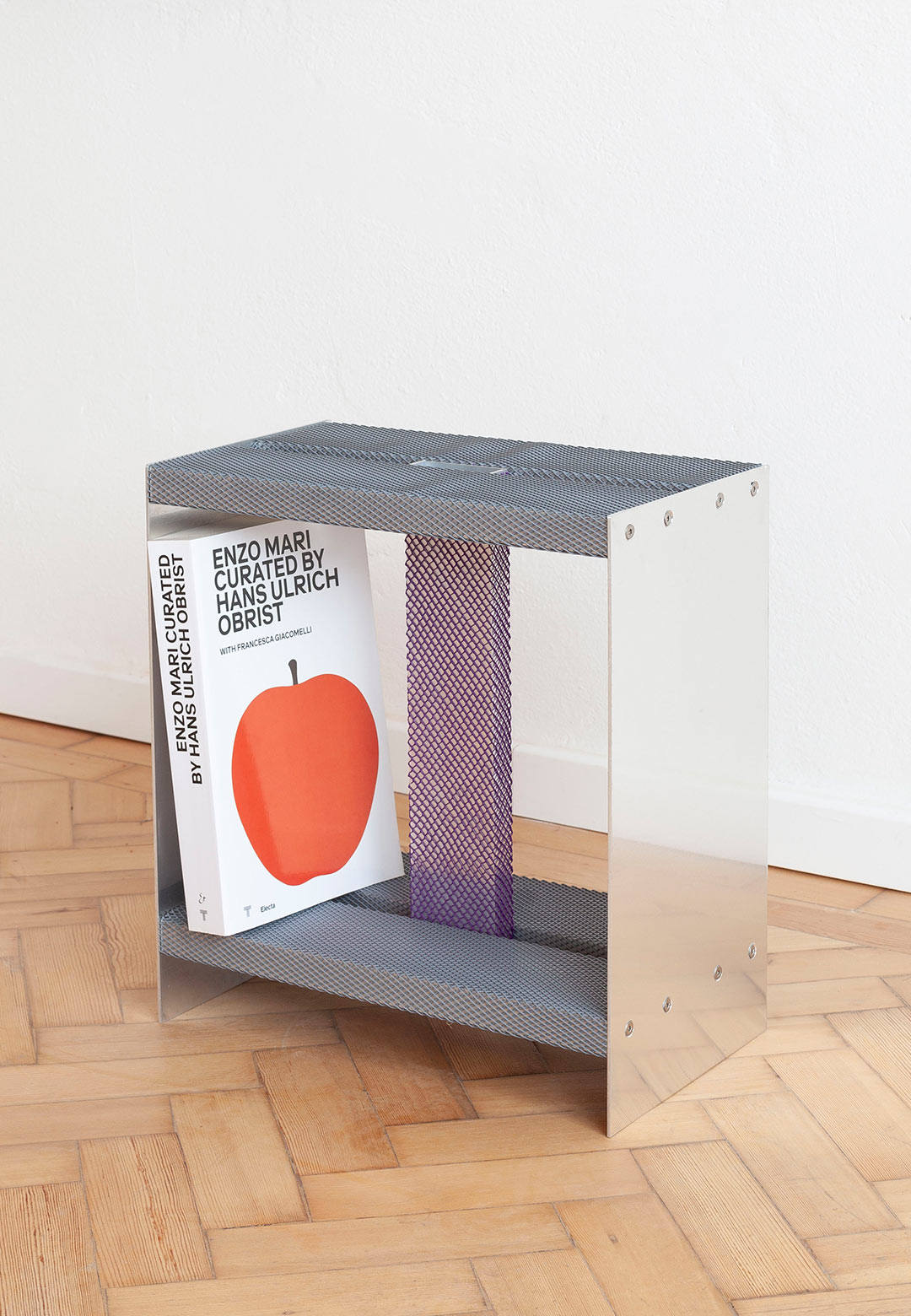London-based Design Museum's ongoing exhibition Enzo Mari celebrates the Italian modernist artist and furniture designer's life. In addition to the showcase of the Italian designer’s furniture, installations, product design and graphic design projects, the retrospective also hosts a series of commissioned tributes from various contemporary designers who have sought inspiration from Enzo Mari’s legacy, style and philosophies.
Among these is Livia Lauber who resides in London, the UK, specialising in designing products, furniture and spaces that embody a sense of familiarity and newness, and are in tandem, grounded with the way people interact with objects around them.
When asked about the initial brief that led her to design the first Enzo book display (the first piece in the collection), she shares, "Mathias Clottu from Behind the Books commissioned me to create the scenography for the Most Beautiful Swiss Books exhibition in London. This showcase features approximately 20 books that are awarded each year in Switzerland and then travel to different cities. The event took place at Reference Point, a library/ bar located at 180 Strand in London."
The Enzo book display stands tall at a height of two metres and is a two-sided wheeled shelf that can easily serve as a room divider. It comprises four horizontal brackets, a base to place books and two vertical supports connected to the subtle outer frame. Recalling her initial visit to Reference Point, Lauber shares, "When I visited Reference Point, whose interior features many great design classics, I immediately thought of creating a display that has its own voice while harmonising with the surrounding furniture pieces. My goal was to design a functional and sculptural display that is reusable, sturdy and space-efficient."
This grid design of the shelf makes neat spaces for the placement of individual books and the shelves, tilted at 12 degrees, ensure the easy placement of books on an otherwise narrow frame. "Aluminium was an obvious choice due to its durability, lightness and ease of manipulation; it's a soft material that can be easily drilled by hand," the product designer shares. Further, the plastic net bands ensure that the books do not slip and fall while adding a pop of colour to these utilitarian and austere furniture pieces. The bands are colour-coded to demarcate their widths—purple represents 50 mm and red represents 70 mm.
Beyond the exhibition, Lauber created variations of the shelf for her home. These include the Enzo small wall shelf, Enzo shallow wall shelf, Enzo shoe shelf and the Enzo side table and shelf. The wall shelves, open on both faces, take on the wall's texture as their backdrop when they are hung up. The shoe shelf and side table, on the other hand, bear a frame that can exist within a space without blocking views or crowding up the space they are placed in.
"I designed a versatile wall shelf to display my cherished treasures, a bookshelf that doubles as a side table, a shoe rack for the entrance and a compact single wall shelf for my everyday essentials...[Since] they are made out of aluminium, they reflect their surroundings and blend in nicely with my apartment," she relays. Owing to their slight, light mien and materiality, one can easily carry the shelves from one place to another, or position them against each other to enhance a room's look.
The sleek shelves are made using off-the-shelf components such as aluminium box sections, plastic netting, screws and wooden inserts. Both the aluminium box sections and wooden inserts were cut to size and then drilled. The wooden inserts help keep the aluminium box sections sturdy. The netting was then wrapped around the frame and trimmed to ensure a neat finish. The different components of the shelves can be assembled and held in place with screws. One can easily dismantle the shelves with the help of a screwdriver. This means that both transporting the shelves and replacing their individual components is uncomplicated and easy.
When asked what the ideal locale for the Enzo collection would be, Lauber shares, "A design lover’s home, a graphic design studio, a book shop, contemporary hotel rooms—there are many suitable contexts." While initially conceived for an exhibition and later expanded upon by the designer for her home, Lauber can envision making more pieces based on new needs and requests by people.






 Sign in with email
Sign in with email










What do you think?